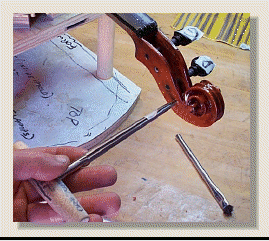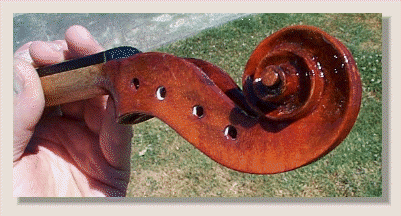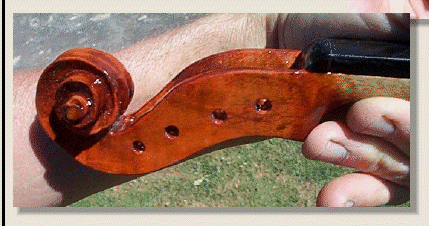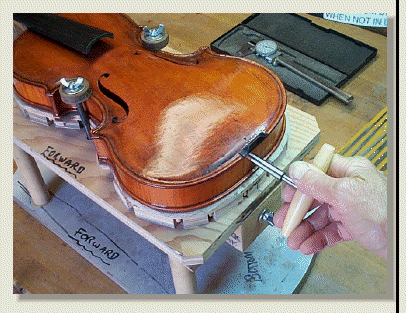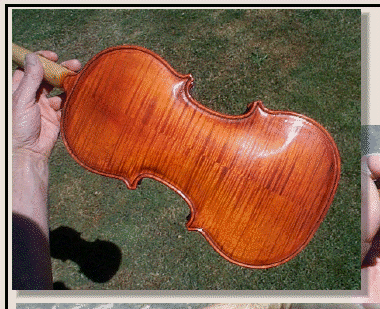Next, the end pin is reamed. I use the same 30 to 1 taper reamer as for the tuning pegs. As this hole was formerly reamed to just under size, only take a tiny amount at a time until the small end of the pin will just come even with the outside of the peg box (that is a snug fit).
The tuning peg function is very important to the enjoyment of the instrument, so fit these carefully. I have prepared the pegs beforehand and tuned them so they have the ideal 198 Tap Tone (downward on the collar) {213 HZ end tap}. . The shoulder of the peg should be just 1/2" away from the side of the neck when the small end of the pin is even with the far side of the peg box. However, since the peg will 'seat in' over time, ream fit it so that the end is 0.15" short of coming to the far side. It will slip in deeper when peg dope is applied to the tuning peg and with use.
Ream each hole with frequent stops to clear the reamer flutes. Continually visually check the angle of the ream by looking from the end and from above. We want the ream (and thus the pegs) to be exactly 'square to the world'. While reaming, the line of the cut can easily wander, cutting an angled hole.
Try and make the peg shafts on the small side to save the peg box for future reamings and to make the tuning pegs adjustment finer (less string length change per turn).
Modified 1/2021
Page O16C_78


